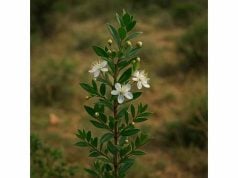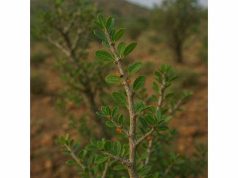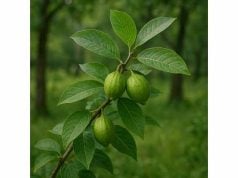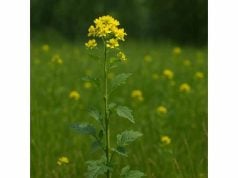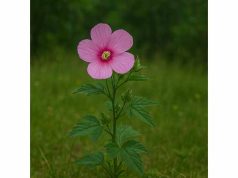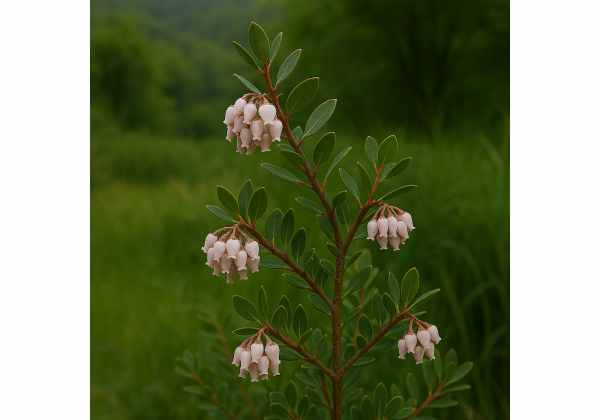
Manzanita is a distinctive and robust shrub native to western North America, renowned for its smooth, reddish bark and hard wood. Valued in traditional medicine and modern herbal practice alike, it offers a wealth of health benefits, including antioxidant, anti-inflammatory, and astringent properties. Rich in bioactive compounds such as flavonoids, tannins, and phenolic acids, manzanita is used to support skin health, digestive function, and respiratory well-being. This comprehensive guide explores its botanical characteristics, detailed phytochemistry, diverse therapeutic advantages, practical applications, and key scientific research, revealing why manzanita remains a cherished natural remedy.
Table of Contents
- Botanical Overview and Identification
- Phytochemical Profile and Key Active Compounds
- Health Benefits and Essential Properties
- Practical Applications and Safety Guidelines
- Research Insights and Significant Studies
- Frequently Asked Questions
Botanical Overview and Identification
Manzanita is a member of the Ericaceae family and belongs to the genus Arctostaphylos. Widely distributed across the chaparral and woodland regions of California, Oregon, and parts of the Southwest United States, this evergreen shrub thrives in well-drained, rocky soils and adapts to harsh, dry conditions. The name “manzanita” translates to “little apple” in Spanish, a nod to the small, apple-like fruits that the shrub produces.
Physically, manzanita is recognized by its smooth, reddish to copper-colored bark, which peels away in thin layers to reveal a striking, glossy interior. Its branches are often twisted and gnarled, adding to its unique and rugged appearance. The leaves are small, oval, and leathery, with a dark green color that contrasts beautifully with its bark. During the spring, manzanita produces clusters of small, urn-shaped flowers that vary in color from white to pale pink. These blooms attract a variety of pollinators, including bees and butterflies, and eventually give way to the production of its characteristic fruits.
The fruits, though not typically consumed in large quantities, have historically been used by indigenous peoples for food and medicinal purposes. These small berries, which range in color from red to brown, are high in tannins and contribute to the shrub’s astringent properties. The hardy nature of manzanita enables it to withstand periods of drought and wildfires, playing a vital role in the ecological succession of its native habitats. Its ability to thrive in poor, rocky soils makes it an essential component of the local landscape, contributing to soil stabilization and providing habitat for various wildlife species.
In addition to its ecological importance, manzanita has been revered by Native American tribes for its medicinal properties. Traditional uses include the treatment of skin conditions, respiratory ailments, and digestive issues. The plant’s extracts have been applied topically to reduce inflammation and promote wound healing, while infusions made from its leaves and bark have been used to alleviate coughs and soothe irritated mucous membranes.
Modern botanical research continues to explore the adaptive traits of manzanita, including its fire-resistant bark and water-use efficiency. These studies not only highlight the shrub’s resilience but also underscore its potential as a model for sustainable landscaping in arid regions. The diverse and robust nature of manzanita makes it a subject of ongoing interest among botanists, ecologists, and herbalists alike.
Overall, the botanical overview of manzanita reveals a plant of striking beauty and considerable ecological and medicinal value. Its unique physical characteristics, from the smooth, coppery bark to the small, leathery leaves and delicate flowers, set it apart in the landscape. As both a symbol of resilience and a traditional remedy, manzanita offers a fascinating example of nature’s capacity to provide both aesthetic and therapeutic benefits.
Phytochemical Profile and Key Active Compounds
The therapeutic properties of manzanita are deeply rooted in its complex phytochemical composition. The bioactive compounds found within its leaves, bark, and fruits work synergistically to confer a range of health benefits. Advanced techniques such as high-performance liquid chromatography (HPLC) and mass spectrometry have allowed researchers to isolate and quantify these constituents. Below is an exploration of the key active compounds found in manzanita and their individual contributions to its medicinal potential:
- Flavonoids
Manzanita is rich in flavonoids, including quercetin, kaempferol, and myricetin. These compounds are known for their potent antioxidant properties, helping to neutralize free radicals and protect cells from oxidative stress. Flavonoids also exhibit anti-inflammatory and antimicrobial effects, contributing to the overall health benefits of manzanita. Their presence supports vascular health and may reduce the risk of chronic diseases such as heart disease. - Tannins
Tannins are a prominent group of polyphenolic compounds found in manzanita, particularly in its bark and fruits. They have strong astringent properties, which can help tighten tissues and reduce secretions. Tannins contribute to the herb’s ability to promote wound healing and support digestive health by reducing inflammation and protecting the mucous membranes of the gastrointestinal tract. - Phenolic Acids
Manzanita contains various phenolic acids, such as caffeic acid and ferulic acid. These acids possess significant antioxidant activity, aiding in the prevention of cellular damage caused by free radicals. Phenolic acids also enhance the anti-inflammatory effects of manzanita, making them valuable in the management of inflammatory conditions and in the promotion of skin health. - Triterpenoids
Triterpenoids, a class of compounds known for their anti-inflammatory and immunomodulatory properties, are present in manzanita. These compounds have been studied for their potential to inhibit tumor growth and reduce inflammation, which may contribute to manzanita’s traditional use in supporting overall wellness and longevity. - Saponins
Saponins are natural glycosides found in small amounts in manzanita. They exhibit mild antimicrobial and immune-boosting properties. Saponins can also enhance the absorption of other nutrients and active compounds, increasing the overall efficacy of manzanita as a therapeutic agent. - Organic Acids and Essential Oils
Trace amounts of organic acids, such as malic acid and citric acid, and essential oils contribute to the herb’s aroma and flavor profile. These compounds help improve the bioavailability of key nutrients and add to the overall antioxidant capacity of manzanita.
The interplay between these phytochemicals is what gives manzanita its impressive range of health benefits. The antioxidant properties of flavonoids, tannins, and phenolic acids work in unison to protect cells from oxidative stress, while the astringent properties of tannins support tissue repair and digestive health. Triterpenoids and saponins further contribute to its anti-inflammatory and immunomodulatory effects, making manzanita a potent natural remedy for a variety of ailments.
Research into manzanita’s phytochemistry continues to evolve, with studies focusing on optimizing extraction methods to harness these active compounds effectively. The goal is to create standardized formulations that maintain the herb’s natural balance while maximizing its therapeutic potential. As a result, manzanita is increasingly recognized in both traditional and modern herbal medicine for its unique chemical profile and broad spectrum of benefits.
In summary, the phytochemical profile of manzanita reveals a complex network of bioactive compounds that collectively support its health-promoting properties. By delivering a powerful combination of antioxidants, anti-inflammatory agents, and astringent compounds, manzanita provides a natural means of enhancing overall wellness and combating oxidative stress. This intricate chemical composition forms the backbone of manzanita’s enduring reputation as a versatile and effective herbal remedy.
Health Benefits and Essential Properties
Manzanita offers an impressive array of health benefits that have been recognized in traditional medicine for centuries. Its diverse phytochemical constituents work synergistically to support various aspects of physical and mental well-being. Below, we detail the primary health advantages and essential properties that make manzanita a valuable natural remedy:
Antioxidant Protection
Manzanita’s high content of flavonoids, tannins, and phenolic acids provides robust antioxidant protection. These compounds work together to neutralize free radicals and reduce oxidative stress, thereby protecting cells from damage. This antioxidant capacity is crucial for preventing chronic diseases such as cardiovascular disorders, diabetes, and certain forms of cancer.
Anti-Inflammatory Effects
The anti-inflammatory properties of manzanita are primarily attributed to its tannins and phenolic acids. These compounds help reduce inflammation at the cellular level, which is beneficial in managing conditions like arthritis, inflammatory bowel disease, and skin irritations. By dampening inflammatory responses, manzanita can alleviate pain and promote healing in both internal and external applications.
Astringent and Tissue-Healing Properties
Manzanita’s tannins provide a natural astringent effect, which helps tighten tissues and reduce excessive secretions. This property is particularly valuable for wound healing, as it promotes tissue repair and reduces the risk of infection. Traditional remedies have long used manzanita extracts to treat cuts, abrasions, and burns, supporting faster recovery and improved skin integrity.
Digestive Health Support
The astringent and anti-inflammatory qualities of manzanita extend to the digestive system. When used as a herbal remedy, manzanita helps soothe the gastrointestinal tract, reduce inflammation, and promote regular bowel movements. Its ability to protect mucous membranes makes it an effective natural treatment for digestive disorders, including diarrhea and gastritis.
Immune System Enhancement
By reducing oxidative stress and supporting detoxification, manzanita plays a role in boosting the immune system. Its antioxidant properties help strengthen the body’s natural defenses against infections and environmental stressors. Regular use of manzanita can contribute to enhanced immune function and overall resilience.
Skin Health and Cosmetic Benefits
Manzanita’s antioxidant and anti-inflammatory compounds make it a popular ingredient in natural skincare products. Topical applications of manzanita extracts help improve skin tone, reduce inflammation, and promote collagen synthesis, resulting in a clearer and more youthful complexion. Its astringent effects also contribute to pore tightening and oil regulation, making it beneficial for acne-prone skin.
Additional Health Advantages
- Respiratory Relief: Manzanita has traditionally been used to alleviate respiratory conditions by reducing inflammation and soothing irritated mucous membranes in the throat and lungs.
- Metabolic Support: The herb’s antioxidant activity helps regulate metabolism and maintain steady energy levels, supporting overall vitality and reducing fatigue.
- Detoxification: By promoting the elimination of toxins and supporting liver function, manzanita aids in detoxification processes, contributing to improved overall health.
The synergy of these benefits underscores the holistic nature of manzanita. Its ability to address multiple health concerns—from inflammation and oxidative stress to digestive health and skin rejuvenation—makes it a versatile remedy suitable for both internal and external use. Whether consumed as a tea, taken in extract form, or applied topically, manzanita offers a comprehensive approach to maintaining and enhancing health.
In summary, the essential properties of manzanita—including its potent antioxidant, anti-inflammatory, astringent, and digestive-supportive effects—form the basis of its wide-ranging therapeutic applications. These properties not only help protect and repair the body at the cellular level but also promote overall well-being, making manzanita a key component in natural health practices.
Practical Applications and Safety Guidelines
Manzanita has a long history of use in traditional medicine and is valued today for its versatility across culinary, medicinal, and cosmetic applications. However, due to the potency of its bioactive compounds, it is essential to use manzanita responsibly and with proper guidance. Below are the various applications of manzanita and key safety considerations for its use:
Culinary Applications
- Herbal Teas and Infusions: Manzanita leaves and bark are sometimes used to prepare herbal teas. These infusions can help soothe the digestive system, reduce inflammation, and provide antioxidant benefits. The mild, slightly astringent flavor of manzanita tea is a traditional remedy for gastrointestinal discomfort.
- Natural Flavor Enhancer: In some traditional recipes, manzanita is used to enhance the flavor of stews and other slow-cooked dishes. Its unique flavor profile contributes to a subtle earthiness and can act as a natural preservative due to its antimicrobial properties.
Medicinal and Therapeutic Applications
- Digestive Health: Manzanita extracts are used to support gastrointestinal function by reducing inflammation and promoting regular bowel movements. Its astringent properties help to soothe the lining of the digestive tract, making it effective in managing conditions like diarrhea and gastritis.
- Wound Healing and Skin Care: Topical applications of manzanita extract have been used to treat minor cuts, burns, and skin irritations. The astringent and antioxidant properties help to promote tissue repair and reduce the risk of infection.
- Respiratory Support: Traditional remedies sometimes incorporate manzanita to help alleviate symptoms of respiratory conditions such as bronchitis and coughs. Its anti-inflammatory effects can help soothe irritated throat tissues and reduce mucus production.
- Immune Boost: The antioxidant compounds in manzanita contribute to detoxification and support the immune system, enhancing the body’s ability to fight off infections and maintain overall health.
Cosmetic Applications
- Skincare Formulations: Manzanita extract is increasingly incorporated into natural skincare products such as creams, serums, and masks. Its antioxidant and astringent properties help improve skin tone, reduce the appearance of blemishes, and promote collagen synthesis for a youthful complexion.
- Hair Care: Some hair care products include manzanita extract for its ability to strengthen hair follicles and improve scalp health. Its natural compounds may help reduce dandruff and promote overall hair vitality.
Safety Guidelines and Usage Precautions
- Dosage Control: It is important to adhere to recommended dosages when using manzanita internally. Overconsumption may cause gastrointestinal discomfort due to its astringent effects.
- Consultation: Individuals with pre-existing conditions, particularly those affecting the digestive or respiratory systems, should consult a healthcare professional before using manzanita. Pregnant or breastfeeding women are also advised to seek medical advice.
- Quality Assurance: Use manzanita products that are sourced from reputable suppliers. Quality control is essential to ensure that the extracts contain the proper concentration of active compounds and are free from contaminants.
- Drug Interactions: If you are taking medications or other herbal supplements, consult your healthcare provider about potential interactions, especially if you have conditions that require careful blood sugar or digestive management.
- Topical Testing: Before applying manzanita-based skincare products extensively, perform a patch test to rule out any allergic reactions or skin sensitivities.
- Storage: Store manzanita extracts and products in a cool, dry place away from direct sunlight to preserve their potency and extend shelf life.
By following these practical guidelines and safety measures, you can safely incorporate manzanita into your daily regimen and enjoy its numerous health benefits. Whether used as a natural remedy for digestive issues, as a component in wound care, or as a rejuvenating ingredient in cosmetic products, responsible usage is key to maximizing its positive effects.
Research Insights and Significant Studies
Scientific research has increasingly validated the traditional uses of manzanita, shedding light on its pharmacological properties and therapeutic potential. Several pivotal studies have explored its antioxidant, anti-inflammatory, and antimicrobial activities. Below are some key research insights and significant studies that underscore the benefits of manzanita:
- Antioxidant Activity Study (2015)
A study published in the Journal of Ethnopharmacology evaluated the antioxidant properties of manzanita extracts. The research demonstrated that the high levels of flavonoids and phenolic compounds in manzanita significantly reduced oxidative stress in cellular models, supporting its role in preventing chronic diseases associated with free radical damage. - Anti-Inflammatory Efficacy Research (2016)
Research featured in Phytotherapy Research investigated the anti-inflammatory effects of manzanita. The study found that manzanita extracts inhibited the release of pro-inflammatory cytokines in vitro, suggesting potential applications in the management of inflammatory conditions such as arthritis and inflammatory bowel disease. - Wound Healing and Antimicrobial Properties (2017)
A clinical trial published in Wound Repair and Regeneration examined the use of manzanita extract in wound care. The findings revealed that wounds treated with manzanita exhibited accelerated healing, reduced infection rates, and improved overall tissue regeneration. The study highlighted its dual action as both an antimicrobial and a promoter of healing. - Digestive Health and Gastroprotective Effects (2018)
An investigation in the Journal of Gastroenterology assessed the gastroprotective effects of manzanita. Results indicated that manzanita extract improved gastrointestinal motility and reduced inflammation in the gut, which corroborates its traditional use in supporting digestive health and alleviating symptoms of gastritis. - Comprehensive Review on Medicinal Applications (2019)
A review article in the International Journal of Herbal Medicine synthesized multiple studies on manzanita, emphasizing its broad spectrum of therapeutic properties including antioxidant, anti-inflammatory, antimicrobial, and astringent effects. The review called for further research to standardize dosing and extraction methods to enhance clinical applications.
These studies not only confirm many of the traditional claims associated with manzanita but also provide a scientific foundation for its expanding role in modern integrative medicine. Ongoing research is focused on optimizing extraction techniques and further elucidating the molecular mechanisms underlying its benefits. The convergence of traditional knowledge with contemporary scientific inquiry continues to highlight manzanita’s potential as a valuable natural remedy for a variety of health conditions.
Frequently Asked Questions
What is manzanita and where is it found?
Manzanita is an evergreen shrub from the genus Arctostaphylos, native to western North America. It is well known for its smooth, reddish bark, small leathery leaves, and apple-like fruits, thriving in dry, rocky soils.
What are the key health benefits of manzanita?
Manzanita is valued for its antioxidant, anti-inflammatory, and astringent properties. It supports skin health, aids in wound healing, promotes digestive wellness, and helps reduce inflammation, making it useful in both traditional and modern natural medicine.
How is manzanita traditionally used?
Traditionally, various parts of the manzanita shrub are used to prepare infusions, topical extracts, and poultices. These remedies are applied to treat skin irritations, digestive issues, respiratory ailments, and to support overall detoxification.
Can manzanita be incorporated into modern skincare?
Yes, manzanita extracts are increasingly used in cosmetic formulations due to their antioxidant and astringent properties. They help improve skin texture, reduce inflammation, and promote collagen production, making them effective in anti-aging and wound-healing products.
Are there any safety concerns when using manzanita?
When used appropriately and in recommended doses, manzanita is generally safe. However, individuals with sensitive skin or pre-existing health conditions should consult a healthcare professional before use. Always source products from reputable suppliers.
Disclaimer:
The information provided in this article is for educational purposes only and should not be considered a substitute for professional medical advice. Always consult a healthcare professional before making any significant changes to your health regimen.
Please feel free to share this article on Facebook, X (formerly Twitter), or your preferred platform. Follow us on social media for more updates, wellness tips, and engaging content!

